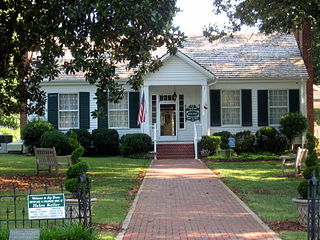
Ivy Green is a historic house museum at 300 West North Commons in Tuscumbia, Alabama, United States. Built in 1820, it was the birthplace and childhood home of Helen Keller (1880–1968), who became well known after overcoming deaf-blind conditions to communicate; she became an author and public speaker. Designated as a National Historic Landmark, it is now operated as a museum honoring and interpreting Keller's life.
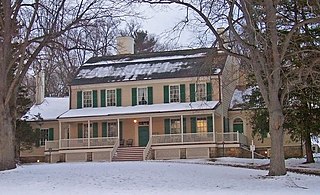
The John Jay Homestead State Historic Site is located at 400 Jay Street in Katonah, New York. The site preserves the 1787 home of Founding Father and statesman John Jay (1745–1829), one of the three authors of The Federalist Papers and the first Chief Justice of the United States. The property was designated a National Historic Landmark in 1981 for its association with Jay. The house is open year-round for tours.

The Nash-Hooper House, also known as the William Hooper House, is a historic house at 118 West Tryon Street in Hillsborough, North Carolina. Built in 1772 by American Revolutionary War general Francis Nash, it was home from 1782–1790 to Founding Father William Hooper, a signer of the United States Declaration of Independence. It is the only known home of Hooper's to survive, and was declared a National Historic Landmark in 1971. It is located in the Hillsborough Historic District; it is a private residence, and is not normally open to the public.
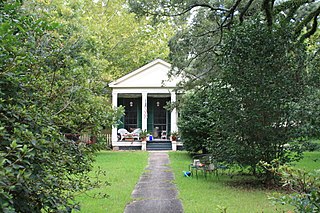
The Amelia Stewart House, also known as the Carol O. Wilkinson House and William Hallett House, is a historic residence in Mobile, Alabama, United States. It was built in 1835, with a significant Greek Revival style addition to the front built in 1871. The house was placed on the National Register of Historic Places on May 29, 1992, based on its architectural significance.

The Dr. John R. Drish House, also known simply as the Drish House, is a historic plantation house in Tuscaloosa, Alabama, United States. It is considered by state preservationists to be one of the most distinctive mixes of the Greek Revival and Italianate styles in Alabama. First recorded by the Historic American Buildings Survey in 1934, it was added to the Alabama Register of Landmarks and Heritage on July 31, 1975, and subsequently to the state's "Places in Peril" listing in 2006. It was listed as Jemison School-Drish House on the National Register of Historic Places in 2015.
The John Ash House, also known as Rowan House, Coker House and Rickles House, is a historic residence near Ashville, Alabama. John Ash emigrated from York County, South Carolina, first to Georgia, later settling in what is today St. Clair County, Alabama in 1817. Ash became a successful farmer, and served as a judge and member of the first Alabama State Senate. In 1821 Ash was one of five local leaders appointed to oversee the construction of a county courthouse and jail; the county seat was later named Ashville in his honor. Ash built a one-story dogtrot log house around 1820. In the 1830s, the house was extensively modified: three rooms and a second story were added to the house, and the exterior was covered with frame siding. The central dogtrot was filled in, and the main portion now resembled an I-house. A triangular pedimented gable adorns the front of the house, and each side has a brick chimney. A porch was added to the front of the house in the early 1900s. The house was listed on the Alabama Register of Landmarks and Heritage in 1990 and the National Register of Historic Places in 1991.

The McCrary House is a historic farm house near Huntsville in Madison County, Alabama. Founded after the initial federal land sale in Madison County in 1809, the farm has been in the McCrary family throughout. It was recognized as an Alabama Century & Heritage Farm in 1979, and reaffirmed on its 200th anniversary in 2009. Additionally, the house was listed on the Alabama Register of Landmarks and Heritage in 1979 and the National Register of Historic Places in 1982.

Flint River Place is a historic residence near Huntsville, Alabama. The house was built between 1844 and 1850 by Daniel Friend, a planter who came to Alabama from Kentucky around 1826. The house is Greek Revival in style, with Federal and Georgian Revival elements. It began as an L-shaped house, with an additional ell and one-story shed roofed infill built in 1930. The house is clad in poplar siding and the gable roof was originally slate over wooden shingles, but has been replaced by asphalt shingles. Two gable-end chimneys have simple, Federal-style mantels. The façade is three bays, with a one-story portico supported by four columns, with a balcony above; it replaced a gable-roofed, two-column portico in 1978. The main entrance is flanked by sidelights and topped with a fanlight. Windows on the entire house, except for the southeast bedroom addition, are six-over-nine sashes. The house was listed on the Alabama Register of Landmarks and Heritage in 1981 and National Register of Historic Places in 1982. The house was heavily damaged in a fire in 2012.

The Phelps–Jones House is a historic residence in Huntsville, Alabama. One of the oldest buildings in Alabama, it was built in 1818, shortly after the initial federal land sale in Madison County in 1809. Despite having many owners, the original character of the house has remained. The two-story house is built of brick laid in Flemish bond, and has Federal and Georgian details. The original block has a bedroom and parlor separated by a central hall, with a dining room in an ell to the northeast. Staircases in the hall and dining room led to three bedrooms on the second floor. In 1956, a porch in the crook of the ell was enclosed, adding a bathroom and small bedroom. Another porch off the rear of the dining room was enclosed and converted into a kitchen. Interior woodwork, including six mantels, is in provincial Federal style. The façade is five bays wide, with twelve-over-twelve sash windows on the ground floor and twelve-over-eight on the second. A narrow hipped roof porch covers the double front door; originally a wider porch covered a single door flanked by narrow sidelights and topped with a transom. The house was listed on the Alabama Register of Landmarks and Heritage in 1979 and the National Register of Historic Places in 1982.
The Leech–Hauer House was a historic residence in Huntsville, Alabama. It was built circa 1830 by professional carpenter William Leech. It was built in a transitional style between Federal and Greek Revival. The house was a two-story, L-shaped structure, with a front porch which was later enclosed. John G. Hauer purchased the house in 1904, and it remained a family residence until it was sold to a flower shop in 1974. It was purchased by physician Parker Griffith and his brother in 1977. The house was listed on the Alabama Register of Landmarks and Heritage and National Register of Historic Places in 1978. The house was subsequently demolished, and a modern medical office building was constructed on the site in 1988.
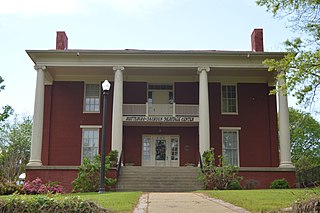
The Brown–Proctor House is a historic residence in Scottsboro, Alabama. The house was built in 1881 by John A. Brown, who sold it just one year later. He sold the house to General Coffey, who bought the house for his daughter Sarah, for 3,200 dollars. John Franklin Proctor, a politician who served in the Alabama Legislature from 1892 through 1899 and was an attorney for the Scottsboro Boys in 1931, purchased the house in 1907. Proctor made numerous renovations to the house, including altering the two-story front portico with Tuscan columns into its current state of a single-level porch supported by Ionic columns with a central second floor balcony. A three-room addition was also built onto the back of the house, adding to the central hall plan of the original house. After his death in 1934, Proctor's family owned the house until 1981.
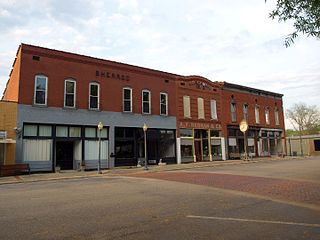
The Courtland Historic District is a historic district in Courtland, Alabama. Courtland was founded in 1818 and incorporated the following year. Its location was chosen to be close to the Tennessee River to facilitate transportation, but also close to cotton plantations to the south. The town's founders envisioned becoming the county seat of the newly formed Lawrence County, but the title instead went to Moulton. Many of the earliest structures in Courtland were built of logs, and were later replaced with frame and brick buildings. Development plateaued by 1830, but received a slight bump from the Tuscumbia, Courtland and Decatur Railroad beginning in 1834. The oldest houses in the district date from this era, including the 1828 Federal-style John McMahon House and several I-houses.

The James Martin House is a historic residence in Florence, Alabama. Martin was a leading Florence industrialist of the Antebellum era, who owned a cotton spinning mill along Cypress Creek. He had come to Florence from Jefferson County, Kentucky, and established his mill in 1839. A fire destroyed the complex in 1844, but was rebuilt and reopened in 1850. The mill was destroyed during the Civil War, but not rebuilt before Martin's death in 1869. Martin's sons operated the mill until 1873, and owned the house until 1879. It was purchased in 1886 by John Bounds, and remained in his family until 1974.

The John and Archibald Christian House is a historic residence near Tuscumbia, Alabama. The house was built in the 1830s by brothers John and Archibald Christian, who were among a group of settlers from the Piedmont region of Virginia who came to Tuscumbia in the 1820s and 1830s. The family had left the house by the 1860s, and in the late 19th century, it was the home of Governor Robert B. Lindsay. In the 1900s, the house was the center of a dairy farm, before it and the surrounding 50 acres were acquired by the Tennessee Valley Country Club in 1923. The country club uses the house as a social meeting area and caretaker's quarters.
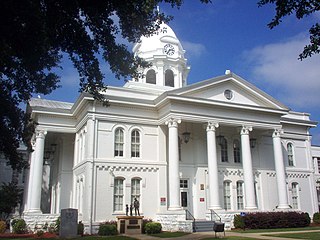
The Colbert County Courthouse Square Historic District is a historic district in Tuscumbia, Alabama. It contains 22 buildings and residences centered on the Colbert County Courthouse.

The Felix Grundy Norman House is a historic residence in Tuscumbia, Alabama. The house was built in 1851 by Felix Grundy Norman, a lawyer who also served as mayor of Tuscumbia and in the Alabama Legislature from 1841 to 1845 and 1847–48. Norman's father-in-law was the land agent for the sale of the Chickasaw lands, and his brother-in-law, Armistead Barton, built Barton Hall in nearby Cherokee, Alabama.
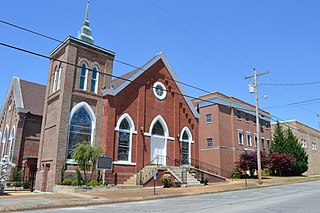
The Tuscumbia Historic District is a historic district in Tuscumbia, Alabama. The district contains 461 contributing properties and covers about 232 acres of the town's original area. The first white settlers in Tuscumbia built a village next to Big Spring, at the site of what is today Spring Park. Many settlers, many from Virginia and Maryland, began to emigrate to The Shoals in the 1820s and 1830s. The oldest houses in the district are Tidewater-type cottages, a style native to the Middle Atlantic. Also built during the town's early period are some of the oldest commercial buildings in Alabama, including the Morgan-Donilan Building and a seven-building block known as Commercial Row. The town's economy declined in the 1840s, when many farmers left seeking more fertile soil, through the Civil War and Reconstruction.

The William Winston House is a historic residence in Tuscumbia, Alabama. Construction was begun in the early 1800s by merchant Clark T. Barton and finished in 1824 by planter William Winston. Winston's son, John A. Winston, was Governor of Alabama from 1854 until 1857; Winston's daughter married another Governor, Robert B. Lindsay. The house remained in the family until 1948, when it was sold to the city, which constructed a new campus for Deshler High School around the house.
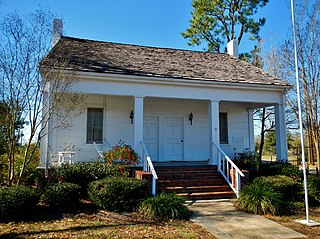
The Kennedy House is a historic residence in Abbeville, Alabama. The house was built around 1870 by William Calvin Bethune, a local physician. The house changed hands several times before being acquired by William and Mollie Kennedy in 1885. The Kennedys, who were Henry County farmers, used it as a town house. It remained in the family until 1974, when it was purchased by the local Board of Education. The house was later owned by the Abbeville Chamber of Commerce.
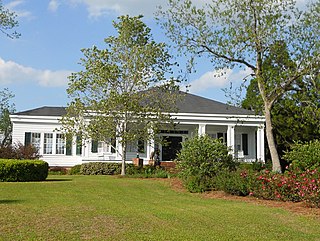
The Glenn–Thompson Plantation is a historic plantation house near Pittsview in Russell County, Alabama. The house was built in 1837, five years after the Treaty of Cusseta which ceded Muscogee lands to the United States. It was built by Massilon McKendree Glenn, son of the founder of nearby Glennville, and an academic who was the president of the Board of Trustees of the Glennville Female Academy. Glenn traded the house and its lands to a nearby planter named George Hargraves Thompson in 1840. Thompson developed the land into a working plantation, and his son, Willis, was one of the first in the area to convert his lands to produce pecans.






















